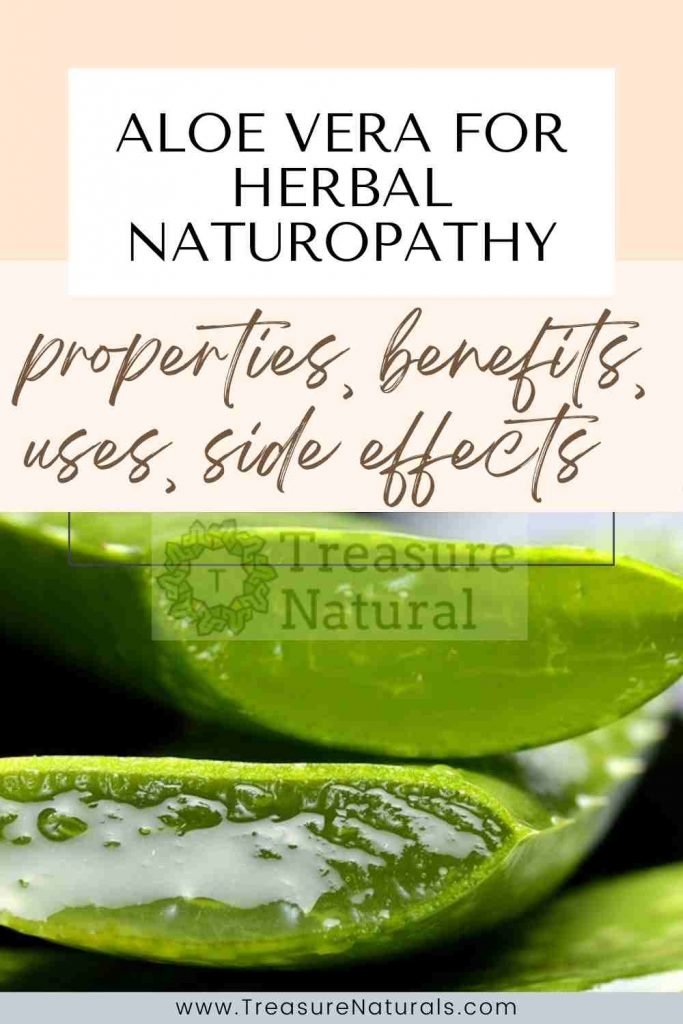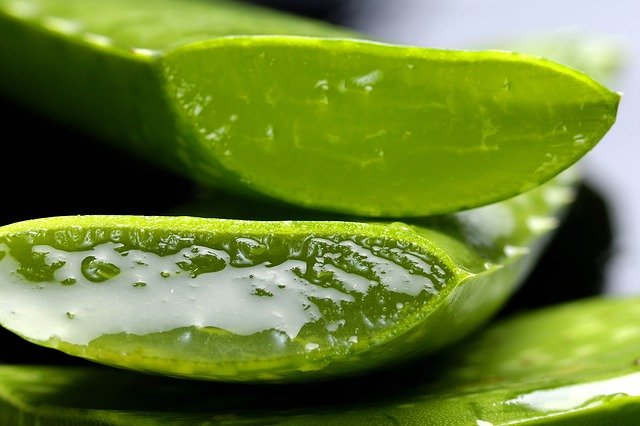
Aloe vera is an anti-inflammatory, healing and laxative plant. Let’s find out all its benefits and how to use it.
The main species of aloe
Aloe is a healing plant of the Aloaceae family, specimens with shrubby habit and succulent leaves, native to different regions of Africa.
The main varieties of aloe are:
- Aloe vera or Aloe barbadensis ;
- Aloe arborescens ;
- Aloe ferox ;
- Aloe perryi .
About fifteen species of aloe have significant therapeutic properties and, among the various types of aloe, one of the best known and most widespread is Aloe vera, also known as Barbados aloe, a medicinal and curative plant.
What is aloe vera used for?
A thick juice and a transparent gel are extracted from the leaves of the various species of aloe by incision.
The pure aloe juice obtained from the outermost part of the leaves was used until recently as a purgative and laxative due to the presence of molecules called anthraquinones, with an irritating action on the intestinal mucosa. Today, the use of aloe juice as a laxative is no longer allowed due to the associated risks.
The juice and gel obtained from the innermost parts of the aloe leaves are still used in herbal medicine because they are free of anthraquinones. The use of these products is especially useful for the healing, soothing and immunostimulating action of aloe.
What are the benefits of aloe vera?
The benefits of aloe vera are many and very heterogeneous from each other. Depending on the mode of use (in juice or gel, for internal or external use), aloe can be used as:
- Moisturizing, emollient and healing for the skin;
- gastroprotector;
- anti-inflammatory, healing and soothing for the mucous membranes.
Since aloe vera products available today do not contain anthraquinones, this plant can no longer be used as a laxative.
Healing and therapeutic properties
Aloe vera juice mainly contains anthraquinone glycosides with a laxative action and was once used in cases of constipation, constipation and lazy intestine.
Anthraquinones are active ingredients of aloe but also of other plant species including senna and rabarbarbaro, laxative remedies that have the same effects as aloe. These molecules work on the intestinal mucosa, irritating it and stimulating peristalsis and, consequently, fecal evacuation.
However, anthraquinone drugs still on sale must be used in moderation and only occasionally since, taken for long periods, they can compromise intestinal function.
The aloe vera gel and the juice are instead rich in mucilage and are still used for external use in the treatment of various dermatological problems and the oral cavity and, internally, for gastric disorders.
For topical use it is possible to exploit the properties of aloe vera for the skin which include anti- inflammatory, moisturizing, refreshing and healing action.
Aloe vera gel: properties and benefits
The benefits of aloe gel are very varied:
- For gastrointestinal disorders, aloe gel for food use is administered in doses of 25-100 milliliters once or twice a day.
- In case of canker sores, gingivitis and stomatitis, aloe gel of food grade pure or diluted in water is used externally to rinse the oral cavity.
- The thicker cosmetic aloe gel is used instead for localized applications on the skin or as a face and body cream.
Aloe vera juice: properties and benefits
The laxative action is the best known property of aloe vera juice. For this purpose, aloe was once recommended in the form of a supplement containing concentrated and dried juice. Today, among the uses of aloe vera we no longer find the laxative and purgative one.
How to use aloe
Externally, the aloe vera gel is used pure in case of dermatitis , psoriasis , burns, wounds and sores, but also for the treatment of dry and damaged skin and in case of sunburn or to relieve itching and swelling caused by bites of insects and hives.
In fact, the skin application of aloe gel helps to soothe inflammation, pain and redness and speeds up healing and scarring.
Diluted aloe gel or aloe juice can also be used for oral rinses that help relieve pain from gingivitis , stomatitis and canker sores. The vagienal mucosa can also benefit from aloe vera gel washes in case of inflammation, burning and itching.
For internal use, on the other hand, aloe vera to drink has a healing, anti-inflammatory and protective action on the gastic and intestinal mucosa and is useful for relieving symptoms related to gastric ulcer and ulcerative colitis.
Cosmetic products and products for internal use are made with natural aloe but it is good to choose products that contain exclusively aloe, therefore free of perfumes, dyes or aromas.
The cultivation of aloe

Aloe is a perennial succulent plant with a shrub bearing, which can reach a meter in height. It has large, fleshy, lanceolate and pointed leaves, with the margin and apex provided with thorns. Near the ground, the leaves are arranged in a rosette from the center of which the floriferous scape rises.
The inflorescence is composed of a raceme of pendulous flowers. Aloe vera flowers can be red, yellow or orange. Spotted during the growth phase, they take on a uniform green color in the adult state, coated with a protective film that allows the aloe plant to filter the air and water.
The leaves are harvested between August and September by cutting them off at the base or by cutting them into large pieces. The resulting juice is collected and concentrated by boiling until it reaches a consistency similar to glass.
How is aloe vera grown in pots?
The aloe plant is native to the north-eastern coast of Africa and the Mediterranean basin, from which it probably spread to India, islands in the Indian Ocean, but also the American continent, from Texas to Mexico to Venezuela, and also Oceania.
It prefers hot and dry climates and grows spontaneously on dry and calcareous soils, but it can also be cultivated, both by seed and by cutting.
The cultivation of aloe vera is quite simple: it is enough to get a seedling already developed and place it in a bright place, even in full sun during the summer months. Aloe vera needs moderate watering and to be protected from harsh winter temperatures.
Growing in pots will hardly allow you to appreciate flowering, but it will be possible to exploit the benefits and effects of aloe vera for external use.
If you decide to grow aloe vera, you can take advantage of its therapeutic properties for skin problems, simply by cutting a leaf and rubbing it on the area to be treated in case of burns, small wounds and skin irritations.
For oral administration, it is good to resort to preparations that are commercially available in herbal medicine, avoiding taking orally leaves or gel of aloe vera grown at home.
Natural remedies with aloe
Since ancient times this plant has been used to obtain natural remedies and since it was discovered, man has begun to treat himself with aloe .
The term aloe (” Allo eh ” in Arabic, ” Halal ” in Hebrew, ” Alo hei ” in Chinese, ” Aloe ” in Western countries) derives from the Greek root Alos , which means ” salty substance” perhaps referring to its habitat maritime ; while another reliable derivation seems to be the one that makes it descend from the Arabic word alua, which means ” bitter “, as in fact it is the complete juice of the plant.
Aloe Barbadensis owes its name to the Barbados Islands, but is also present in the rest of the Antilles, in the Caribbean
Aloe vera has been known for thousands of years for its medicinal properties: it is mentioned in the Old Testament, in the Gospels and in ancient documents that pass on the use of Aloe among the Egyptians, the Chinese, the Indians and the Arab peoples.
Defined as a plant of immortality by the ancient Egyptians, it was planted at the entrance to the pyramids to indicate the path of the Pharaohs towards the land of the dead.
Also used as an ingredient in the preparation of balms for mummification, as in the case of Pharaoh Ramses II. The oldest document in which reference is made to Aloe vera seems to be the Ebers Papyrus (about 1500 BC), which is currently kept at the University of Leipzig, which lists the health properties of the sap of this plant.
Hippocrates (460-337 BC), the father of Western medicine, repeatedly mentions the use of aloe in his treatises, extolling its anti- inflammatory , regenerating and disinfecting properties .
Dioscorides , Greek physician (20-70 AD), author of the oldest surviving pharmacology treatise , De materia medica, extensively described the beneficial effects of this plant for healing sores , healing wounds , protection and relief against burns . , itching and skin inflammation.
Even Pliny the Elder, author of the famous treatise Historia Naturalis , described the therapeutic uses of aloe juice to treat wounds, stomach ailments , constipation , insect bites, oral problems. The Ancient Romans in fact exploited aloe for its healing properties : it was used in the form of balm for the treatment of war wounds of soldiers.
During the Middle Ages and the Renaissance, the medicinal use of aloe spread in Europe, and its use for curative purposes was also introduced in the New World , perhaps by the Spanish missionaries. From that moment the cultivation of the plant spread first in the Caribbean and then in Mexico and South America.
In 1851 two English researchers, Smith and Stenhouse, isolated aloin , the substance from laxative effects; while in 1935 Creston Collins and his son revealed in a report that later became famous, the possible use of aloe to treat the devastating effects of radiation .
The Texan pharmacist Bill Coats, at the end of the 1950s , managed to stabilize the pulp with a natural process , finally opening the doors to the commercialization of aloe-based products for industrial use. This procedure, designed to preserve the enzymes and vitamins present in the juice, consists in the incubation of the gel with the addition of vitamin C ( ascorbic acid ), vitamin E ( tocopherol ) and sorbitol.
Contraindications of aloe
The external and internal use of aloe does not present particular side effects.
Among the contraindications of aloe vera, however, it should be noted that the internal use of aloe gel or juice could interfere with the absorption of nutrients and drugs, so it is advisable to consult your doctor if you are following therapies.
The aloe cosmetic uses are considered safe and risk-free but the application of aloe gel on the skin can cause allergic reactions in susceptible persons.






